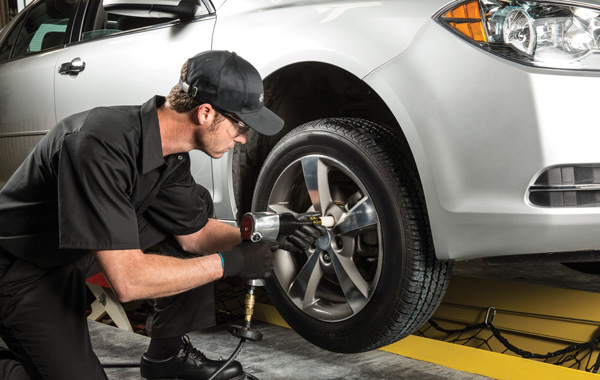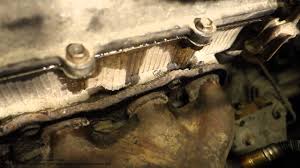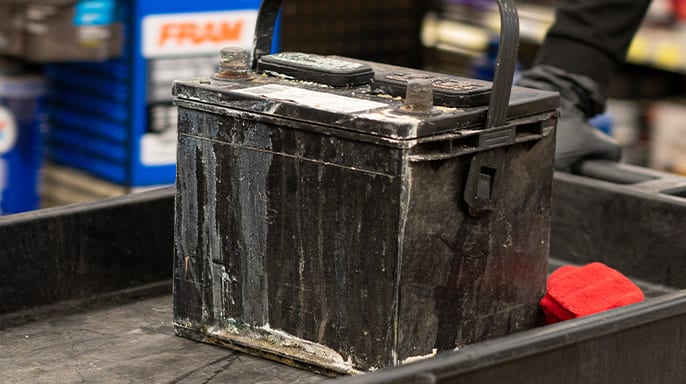Does a Blown Head Gasket Leak Oil?

A blown head gasket is one of the more serious and costly issues a car owner can face. It can lead to various symptoms and problems with your vehicle’s performance, including questions about whether it can cause an oil leak. In this article, we’ll explore the relationship between a blown head gasket and oil leaks, the signs to watch for, and what you can do to address the issue.
What Is a Head Gasket?
1. Purpose of a Head Gasket
The head gasket is a vital component of your vehicle’s engine. It sits between the engine block and the cylinder head, sealing the combustion chamber and ensuring proper compression. Additionally, it keeps coolant and oil from mixing with each other or entering the combustion chamber.
2. How Does It Work?
The head gasket’s role is to:
- Seal the combustion process.
- Prevent oil and coolant leaks.
- Ensure proper engine function by maintaining pressure.
Can a Blown Head Gasket Leak Oil?
Yes, a blown head gasket can lead to oil leaks. Here’s how:
1. Compromised Sealing
When the head gasket is damaged, the seal between the engine block and cylinder head is compromised. This can cause oil to leak out of the engine.
2. Oil-Coolant Mixing
In some cases, a blown head gasket may cause oil to mix with coolant, leading to contamination. This might not appear as an external oil leak but will affect engine performance.
3. External Oil Leaks
A common symptom of a blown head gasket is oil leaking externally from the engine, particularly around the area where the gasket is located.
Signs of a Blown Head Gasket
1. Visible Oil Leaks
- Oil dripping from the engine near the head gasket.
- Oil stains under the vehicle after it has been parked.
2. Contaminated Oil
- Milky or frothy appearance in the oil, indicating it has mixed with coolant.
3. Coolant Loss
- Unexplained loss of coolant, which may mix with oil or leak externally.
4. White Smoke from Exhaust
- A blown head gasket can allow coolant to enter the combustion chamber, causing thick white smoke to emit from the tailpipe.
5. Overheating Engine
- A blown head gasket often results in engine overheating due to coolant loss or contamination.
6. Poor Engine Performance
- Loss of power or rough idling.
Causes of a Blown Head Gasket
- Engine Overheating
- Excessive heat can warp the cylinder head, causing the gasket to fail.
- Aging Components
- Over time, the gasket may weaken due to wear and tear.
- Improper Installation
- Incorrect installation or torquing of the cylinder head bolts can lead to premature failure.
- High Engine Stress
- Hard driving or heavy towing can increase the likelihood of gasket failure.
How to Diagnose a Blown Head Gasket
1. Visual Inspection
Look for visible oil leaks around the engine’s head gasket area.
2. Check the Oil and Coolant
Inspect the oil for a milky appearance and the coolant for signs of contamination.
3. Compression Test
A compression test can reveal a loss of pressure in the cylinders, indicating a damaged gasket.
4. Chemical Test for Combustion Gases
Testing the coolant for the presence of combustion gases can confirm a blown head gasket.
Repairing a Blown Head Gasket
1. Replace the Head Gasket
The most effective solution is to replace the damaged gasket. This is a labor-intensive process and may cost $1,000 to $3,000, depending on the vehicle.
2. Use a Head Gasket Sealer
In some cases, a head gasket sealer can temporarily fix minor leaks. However, this is not a permanent solution and may not work for severe damage.
3. Inspect and Repair Related Components
While replacing the gasket, inspect the cylinder head and engine block for warping or cracks, as these may need resurfacing or replacement.
Preventing Head Gasket Issues
- Maintain Proper Engine Cooling
- Regularly check coolant levels and ensure the radiator and thermostat are functioning correctly.
- Avoid Overheating
- Address overheating issues promptly to prevent head gasket damage.
- Use Quality Parts
- Use high-quality gaskets and follow the manufacturer’s specifications for installation.
- Regular Maintenance
- Keep up with oil changes and other routine maintenance to avoid engine stress.
FAQs
1. Can you drive with a blown head gasket?
Driving with a blown head gasket is not recommended, as it can cause further damage to the engine and increase repair costs.
2. How long does a head gasket last?
A head gasket typically lasts 100,000 to 150,000 miles, but this depends on driving habits and maintenance.
3. What happens if oil and coolant mix?
Oil and coolant mixing can damage engine components, reduce lubrication, and lead to overheating.
4. Are external oil leaks always a sign of a blown head gasket?
No, external oil leaks can also result from other issues, such as a damaged valve cover gasket or oil pan gasket.
5. How much does it cost to replace a head gasket?
Head gasket replacement costs range from $1,000 to $3,000, depending on the vehicle and labor rates.
Conclusion
A blown head gasket can indeed cause oil leaks, both internally and externally. Recognizing the symptoms early and addressing them promptly can save you from more extensive and expensive repairs down the line. If you suspect a blown head gasket, consult a professional mechanic for diagnosis and repair. Proper maintenance and timely attention to engine issues can help you avoid this costly problem.
Also Check:






2 Comments